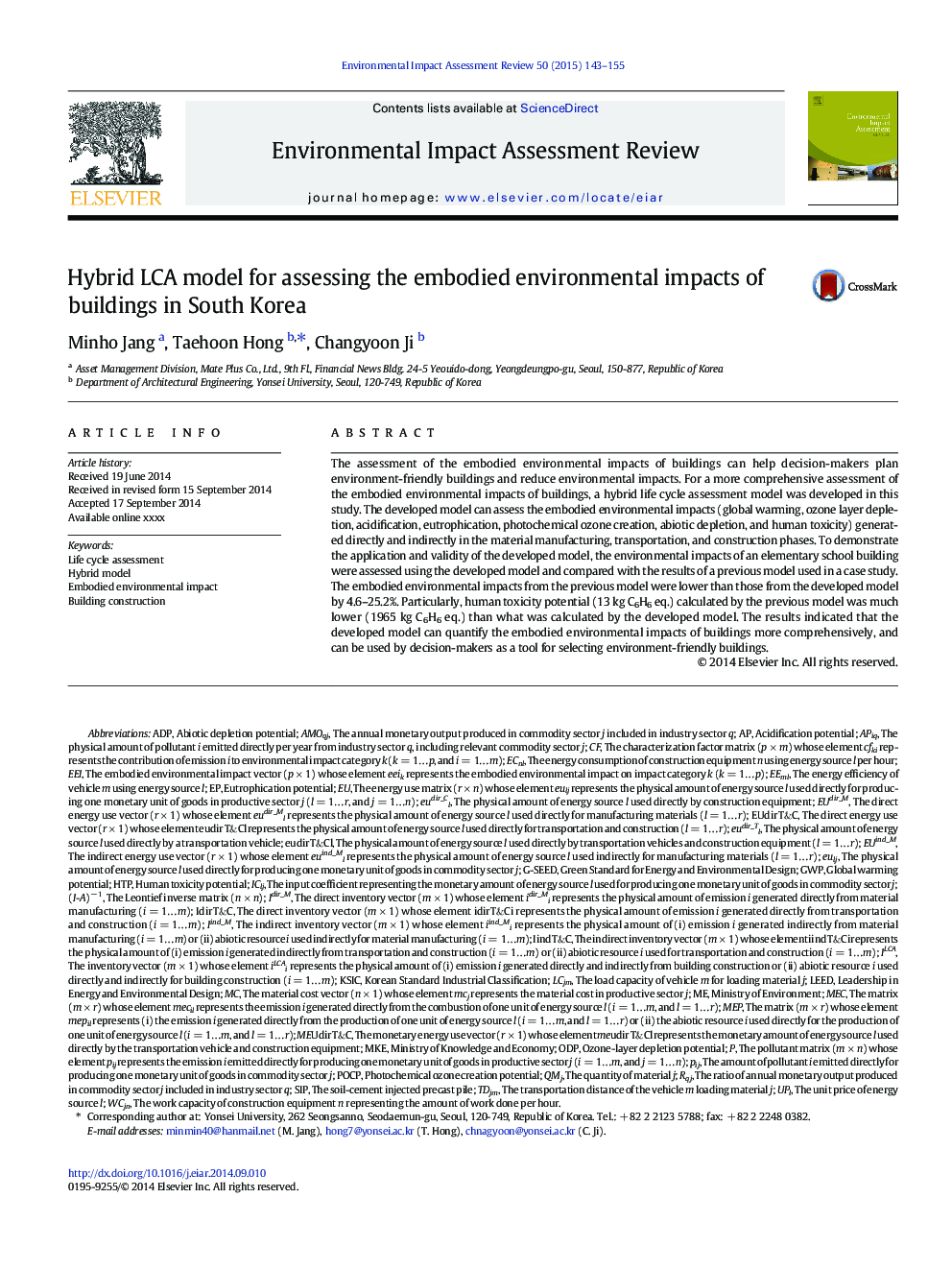| Article ID | Journal | Published Year | Pages | File Type |
|---|---|---|---|---|
| 7465430 | Environmental Impact Assessment Review | 2015 | 13 Pages |
Abstract
The assessment of the embodied environmental impacts of buildings can help decision-makers plan environment-friendly buildings and reduce environmental impacts. For a more comprehensive assessment of the embodied environmental impacts of buildings, a hybrid life cycle assessment model was developed in this study. The developed model can assess the embodied environmental impacts (global warming, ozone layer depletion, acidification, eutrophication, photochemical ozone creation, abiotic depletion, and human toxicity) generated directly and indirectly in the material manufacturing, transportation, and construction phases. To demonstrate the application and validity of the developed model, the environmental impacts of an elementary school building were assessed using the developed model and compared with the results of a previous model used in a case study. The embodied environmental impacts from the previous model were lower than those from the developed model by 4.6-25.2%. Particularly, human toxicity potential (13Â kg C6H6 eq.) calculated by the previous model was much lower (1965Â kg C6H6 eq.) than what was calculated by the developed model. The results indicated that the developed model can quantify the embodied environmental impacts of buildings more comprehensively, and can be used by decision-makers as a tool for selecting environment-friendly buildings.
Keywords
GWPEmbodied environmental impactPOCPEEILEEDUPLSIPADPMEPMECHTPODPLife Cycle AssessmentLeadership in Energy and Environmental DesignBuilding constructionHybrid modelAcidification PotentialPhotochemical Ozone Creation Potentialhuman toxicity potentialglobal warming potentialEutrophication potentialAbiotic Depletion Potential
Related Topics
Physical Sciences and Engineering
Energy
Renewable Energy, Sustainability and the Environment
Authors
Minho Jang, Taehoon Hong, Changyoon Ji,
